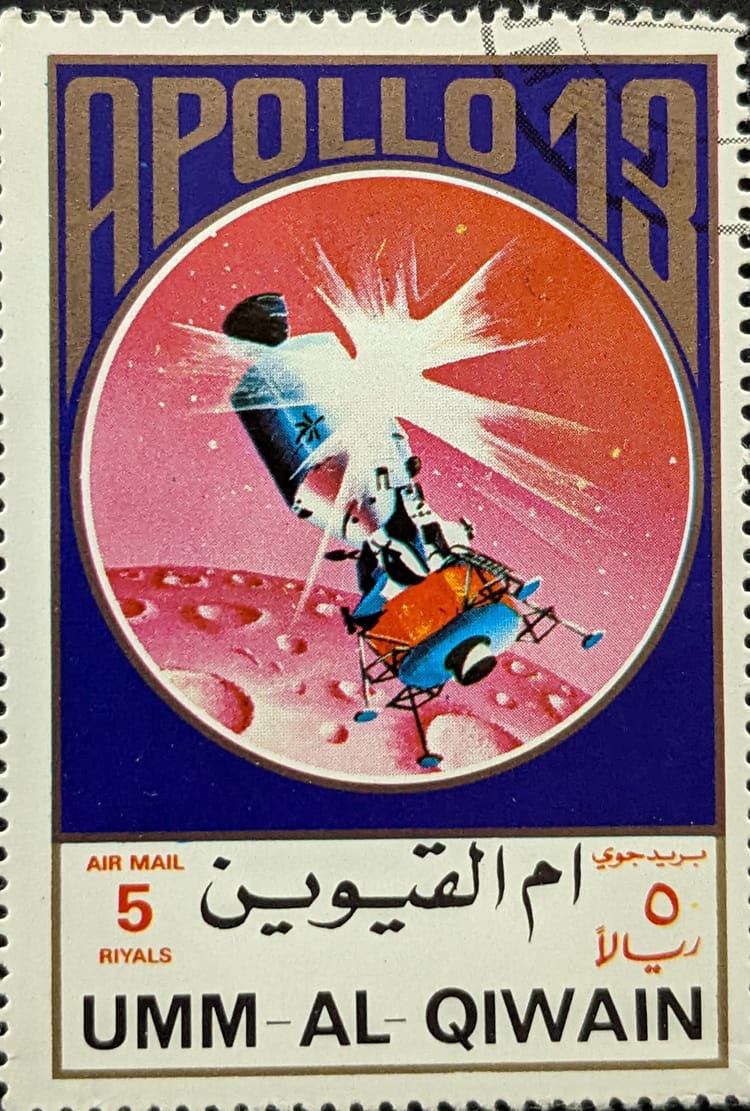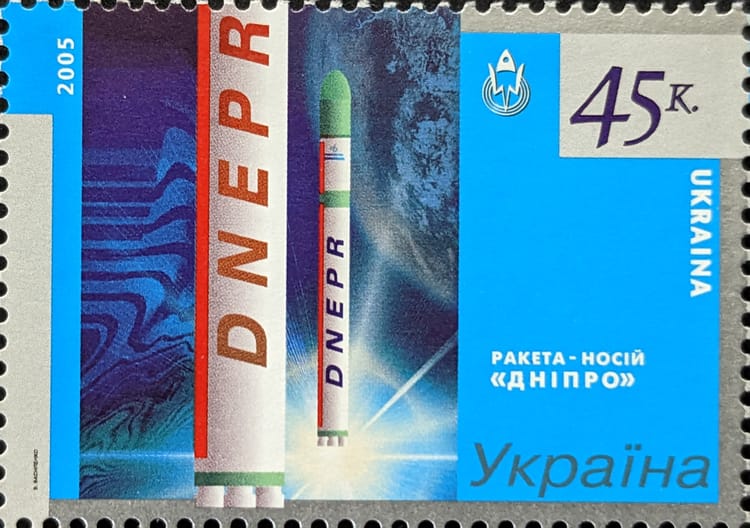Military Milestones, Costs, and Culture
I’m going to admit this up front--I went down a rabbit hole in this analysis. A long one. But I guarantee you this particular analysis is COVID-19-free.
The Milestone that Isn’t
The United States Space Force (SF) monitored the launch of the DoD’s sixth Advanced Extremely High Frequency (AEHF) satellite last week. Many have noted this AEHF launch is the Space Force’s first mission, attaching some kind of importance to the launch. Never mind that it’s a military satellite for a military mission--the kind the USAF has helped launch for decades.
The launch crew consists basically of the same servicemembers (working alongside the same launch contractors) who were once a part of the United States Air Force (USAF) who switched badges from one service to the other and then did the job they were trained to do when they were in the USAF. Is it great they got the job done? Yes. Was the mission’s success an unexpected result? No. But, if it had to, the SF crew would have responded to unexpected indications just fine.
The fact is that the people conducting the mission haven’t changed, the launch mission didn’t change, and the contracts remained in place from USAF acquisitions agreements years ago. Not even the launch service provider changed: the United Launch Alliance (ULA) was paid to launch the $1.2 billion communications satellite. The AEHF satellite itself is based on Lockheed Martin’s A2100 satellite bus, a bus that’s been around since about the mid-1990s, which probably was tweaked for the AEHF mission.
What changed significantly, though, is that the AEHF constellation of six satellites cost U.S. taxpayers between $11-12 billion--an average of $2 billion per satellite (on the high side). The change is much steeper than the USAF’s initial estimate of $6 billion for the entire program.
Commercial versus Military
Let’s compare DoD spending and program activities for an AEHF satellite versus a more commonplace geosynchronous communications satellite--Viasat. California-based Viasat ordered a Viasat-2 satellite from Boeing in 2013 for $600 million. The satellite was supposed to have a high throughput rate of 300 gigabits per second. Four years later, Viasat-2 was in orbit around the Earth. Viasat-2 was initially supposed to launch in 2016, a year earlier, on a Falcon Heavy rocket. A Falcon 9 failure in 2015 impacted the satellite’s scheduled launch and Viasat launched in 2017 with Arianespace instead.
The DoD awarded Lockheed Martin the AEHF contract in 2001 (although the AEHF competition started back in 1999). The “fast” rate for AEHF communications was to be eight megabits per second, which probably seemed fast in 2000-2001 (also, DoD equipment on the ground was likely incapable of receiving higher transmissions). The satellite was supposed to launch five years later in 2006 (already two years behind Viasat-2). Instead, it launched in 2010.
The normal saying for space acquisitions is “Good-Cheap-Fast. You can pick any two.” And yet, somehow, the DoD managed to not pick any (as it took so long to launch AEHF, even the "good" payload was obsolete). Is a $2 billion AEHF satellite 233% better and more reliable (the difference in cost between Viasat-2 and the average AEHF satellite cost) at its task than a Viasat satellite? Yes, Viasat-2 has issues--but it's still very capable.
There are those that say the AEHF satellite is more complicated, more capable than Viasat-2. It’s “jam-resistant.” But Viasat and Boeing might guess that the Viasat-2 satellite is more capable than its AEHF counterpart, if only because the technology has changed so radically between 1998 and 2013. Maybe Viasat-2 is not jam-resistant. But appending that capability to AEHF doesn’t guarantee an AEHF communications signal won't be jammed--just that it wasn’t likely or easy to do...back in 1998.
Obviously, the air service underestimated. It underestimated AEHF costs so badly, the program is now a case study (page 106) for the Government Accountability Office (GAO) and the focus of a Rand report. In an earlier report (2006), the GAO provided an observation of why satellite programs like AEHF grew in costs far exceeding initial estimates:
Increasingly, DOD has preferred to make fewer, but heavier, large and complex satellites that perform a multitude of missions rather than larger constellations of smaller, less complex satellites that gradually increase in sophistication. This has stretched technology challenges beyond current capabilities in some cases and vastly increased the complexities related to software—a problem that affected SBIRS High and AEHF, for example.
In other words, the DoD has only itself to blame.
Instead of using established, reliably-working technology, it’s taken it upon itself to “push the edge” of technology. There are other departments in all services that are assigned to push the edge of technology already. And DoD acquisitions doing this business (instead of acquiring proven, reliable tech) has proven to cost more money, take more time to test and build, and doesn’t guarantee a working satellite (which can negatively impact battlefield operations).
Money Changes (but Culture Doesn’t)
Despite the reports and a Nunn-McCurdy breach, the latest AEHF launch shows the program managed to stay alive while spending more taxpayer money. And this is what has not changed in a few decades of DoD program management. Such uncanny survival skill is typical of quite a few DoD space programs and demonstrates certain cultural inertia regarding what’s acceptable in those programs. We see this in the other DoD-run space acquisition programs mentioned in those previous reports. Yes, the self-inflicted program challenges for AEHF appear to be the rule, and not the exception. And a cause for concern as new proposals for other expensive systems are floated by the DoD.
Also typical is the lack of a public demonstration/test as to the effectiveness of the technologies on these satellites, so taxpayers KNOW the extra money spent on AEHF is worth the investment (and that 10+ years of program management is worth our servicemembers time). That the technology unequivocally performs its mission in a way that justifies such extravagant expenditure, rather than turning to existing commercial solutions. The ultimate goal of the program would be that the space technology somehow provides U.S. soldiers, sailors, air and space force members a fighting chance on the battlefield.
Supposedly the DoD will change the acquisitions process, but when I see a quote like this, it sounds like it won’t be a change for the better:
“I think many people across the defense industrial base and stakeholders will be very happy with this report.”--John Thompson, SMC Lt. Gen.
Is the point of the suggested changes to DoD acquisition to keep the “defense industrial base and stakeholders” very happy? Or is the point of the suggested changes to ensure the DoD can get its mission-critical space assets on orbit in less than a few years for less money? When the defense industrial base is kept happy, that implies the current rate of DoD spending will remain at current levels or even go higher. It implies that legacy companies don’t have to worry about competition. Is that a good thing? It’s good if you’re a military-focused contractor. It might be good for the troops (but not necessarily).
This doesn’t sound like a culture change for DoD acquisitions, which is what is sorely needed. There’s no evidence to me that--despite all the talk, all the reorgs, and new names in the news--the acquisition culture has changed. Which is a shame and a waste for the SF.
Not the Most Responsible Idea...
Tying this in with current commercial events to a very prominent LEO broadband future case study: OneWeb. When an acquisition official talks of a DoD need for large low Earth orbit (LEO) constellations with less capability than now-bankrupt OneWeb’s constellation--for more money--that makes it seem as if the culture hasn’t changed. In one of the many GAO observations given in the 2006 report’s conclusion:
For the most part, this has not been caused by poor cost estimating itself, but rather the tendency to start programs before knowing whether requirements can be achieved within available resources.
OneWeb’s per-satellite costs didn’t waver much from Greg Wyler’s 2014 estimate of $1 million. The OneWeb satellites still cost about $1 million each. But the cost of the OneWeb constellation more than doubled from the 2014 estimate of $1.5 billion. Greg Wyler is a guy who already did something similar once, with O3b. He is a little familiar with the requirements for LEO communications constellations and likely knew what to expect. And even with that experience he badly underestimated the costs (and the efforts required to raise funding).
The DoD has never operated a large LEO communications constellation. It can guess at the technologies required (not to mention ground infrastructure necessary) for a large LEO constellation. It certainly would do the DoD some good to take a long hard look at the lessons shown in full from OneWeb's and SpaceX's experiences. The LEO DoD constellation is “only” for 250 satellites--at an estimated cost of nearly $11 billion. I am not sure where that estimate came from, but I’m sure a prime or two was “consulted” (none of whom have had experience with large LEO constellations).
It’s not a case of the Space Force shouldn’t be allowed to operate a large LEO constellation, but rather a case of “wait and see.” OneWeb has already failed, but that doesn’t imply that SpaceX’s Starlink will. And Amazon’s Project Kuiper may bring a communications capability beyond a space operator’s wildest dreams. And faster.
It’s suspicious that the LEO constellations idea for the DoD was floated when there’s already intense interest in LEO broadband constellations. That department's $11 billion estimate will inevitably balloon if the program is implemented, based on the history of other DoD space programs. I have no real evidence that it will nor any good reason why other than noting that this kind of program appears to indicate to me that there’s no change in the DoD acquisitions culture.
China and Russia are continued to be trotted out as threats to U.S. supremacy in space, and the DoD should continue monitoring their activities. However, the source of real panic and the actual threat to the U.S. is the glacial program pacing, extreme program costs, and other challenges in the DoD’s acquisition process and culture.




Comments ()